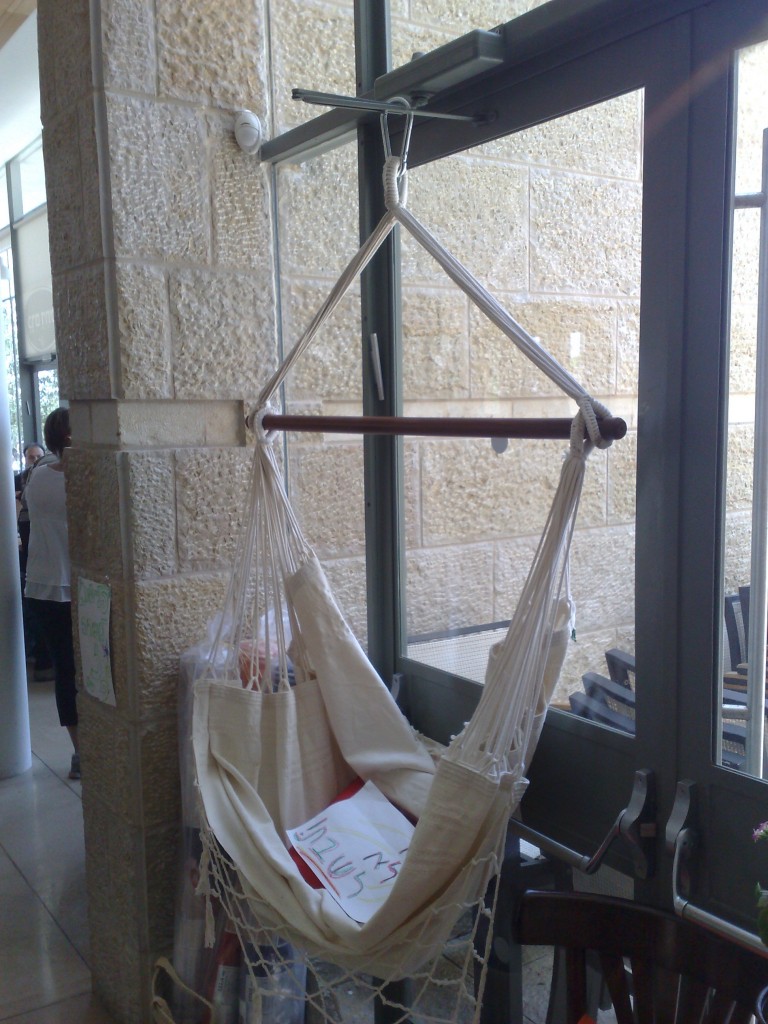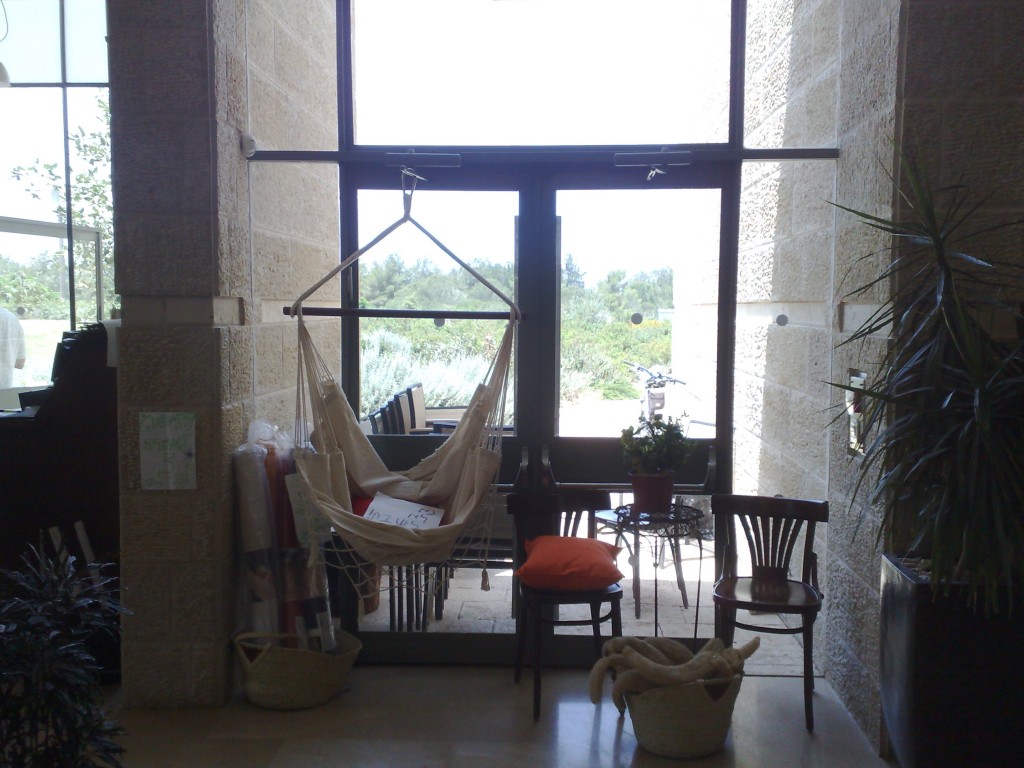My old buddy George Nimee used to tell a story about a school custodian who put black grease on the top of all the closer arms in the school. When the kids jumped up and grabbed the closer arm their hands would get all greasy, they’d wipe their hands on their shirts, and the custodian would know who’d been hanging on the closer arm. Ingenious!
Closer arms are used for all kinds of things – chin-ups, coat hooks…but this is a first. My friend Eyal tells me that the letters in Hebrew on the seat translate to, “Please do not sit.” I wonder if anyone tried to test-drive the hammock before they created the sign.
I hope these doors aren’t a required means of egress.
Thank you to Eyal Bedrik of Entry Systems Ltd. for the photos.
You need to login or register to bookmark/favorite this content.








heheheh nice story about school custodian Lori, they used to do something similar with the fire alarm pull stations, we had soo many false alarms that they put some red goo on the handles or a dye that would turn green or purple when exposed to a blacklight or UV or special light.
(and yes, they did have people going around checking for purple or green dyed hands after a false alarm (pull when no emergency exists)
now for the door repair guy that has do work on the school door(outside contractor), I HOPE he’s been warned about greasy closer arms, grease (or oil) can easily be mistaken for a leaky closer and him end up having to replace all the closers in the school when what really happened was some custodian’s way of discouraging kids from hanging or grabbing the arms, doing chin-ups on the closers is not good for the o-ring and is mostly the reason why many middle and high schools (that I have been to or seen) have all LCN’s in halls, classrooms and closets (middle school I went to)
this photo also makes me wonder, has anyone at LCN tested the weight rating of their arms in this and other installations, (how much wight can be put on it before the weight effects operation or breaks arm/closer pivot. if this is really common for closer applications,(any brand) why don’t they just add another warning to the long laundry list of warnings that are on the instructions that come with the various brands of closers (a warning to not hang onto/from or put any weight on a closer’s arm after installation)
(yea, I have seen a few times were the arm spindle shaft of closer would break off the closer body due to arm problems, to add, the closer that broke was NOT an IR product)
hey another use for door closer arms, a reacher, after the sump pump in basement caused a flood up to my ankles (water was too much for it and it needed a cool off period and water level was up to bottom of motor brushes inside causing it to shut off) so instead of swimming, I removed the arm from my old closer, unplugged the flooded pump and was digging down into the hole the pump sits in clearing out anything that may have got down in the hole or clogged the impeller on sump pump. (yea, I know, not the most recommended use for an arm but it worked, and no, arm didn’t rust)
another reaching use for the arm is to retrieve the TV remote from under the couch or a low shelved coffee table and its out of reach of your own hand or arm.
another good use, keeping certain door to door visitors at bay……….. but the people that go knocking door to door in my area just DONT take no for an answer too easily (will not say who) but used to happen weekly and it took a few times with a question and showing them an old closer (1950’s traditional style) got them to leave me alone for good (I have not had them come by in about 4 or 5 years now…….(knock on wood, I hope I don’t change that!)
sorry if my ideas are weird or odd for something simple, but when you put your mind to it, a door closer’s arm can be used for more then just a link between the rack-and-pinion device and door/doorframe.
-Jess the doordoctor